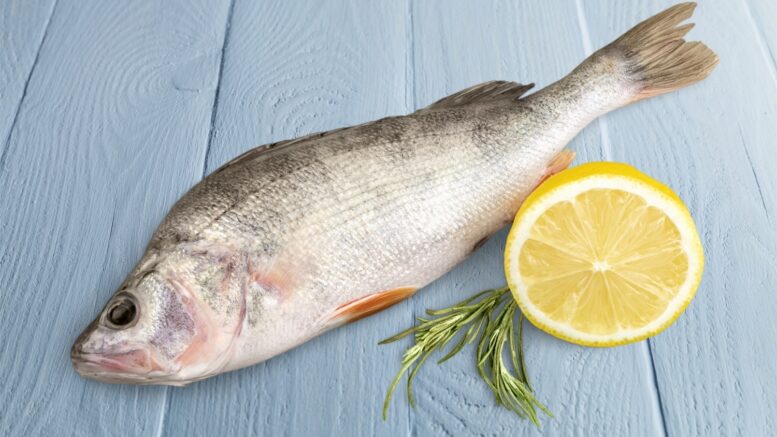Protein-Rich Alternatives to Meat
Some people believe that if they don’t eat meat every day, they don’t eat well. But it is possible to eat much less and not suffer any nutritional deficiency. In this article, you will discover eight alternatives to meat.
1. Fish, better baked
It is an excellent alternative. It does not satisfy so much, but it is easier to digest and its proteins are also complete.
You can consume 150 g, 3 0 4 times per week.
In addition, it contains vitamins A, D, E, B6 and B12; minerals, especially iodine, and omega 3 fatty acids (especially blue).
Make it cooked simply: steamed, baked, grilled…
Avoid it fried.
2. Egg, scrambled or boiled
The egg is a great source of good quality protein (in fact, it serves as a reference to value other protein foods).
In addition, it is very rich in vitamins, minerals and antioxidant substances. Until recently it was believed that cholesterol was rising, but recent studies have shown that it hardly influences hypercholesterolemia.
You can eat 4 or 5 eggs per week.
3. Legumes, all of them
Lentils, chickpeas, beans, and soybeans… contain a high percentage of proteins, although they are poor in methionine (essential amino acid).
Legumes are also a source of complex carbohydrates, vitamins (especially from group B, except B12), minerals (potassium, magnesium, iron, zinc, calcium…) and fiber.
2 or 4 servings per week are recommended.
To its nutritional richness, it is necessary to add its content of antioxidant substances (phytic acid, isoflavones, etc.) and fiber.
Take them in salads, sauteed with vegetables, pureed.
As a reference, a serving of raw legumes is 60-70 g.
4. Cereals, such as quinoa
Cereals such as rice, wheat, corn, oats, quinoa and rye are a source of slow-absorbing carbohydrates.
If you choose whole grain provides more vitamins, minerals and fiber than refined ones.
Although they contain proteins, they are deficient in lysine (essential amino acid).
Special mention should be made of pseudocereals such as quinoa, amaranth and buckwheat, which do carry complete proteins.
5. Dairy products, beyond milk
All whole dairy products (milk, cheese, yogurt, etc.) include proteins of high biological value.
In addition, they provide calcium and vitamins for groups B, A and D.
But they also provide saturated fat.
We recommend eating them skimmed.
6. Nuts, in handfuls
Nuts, in addition to having proteins, provide heart-healthy unsaturated fatty acids.
In addition, they contain vitamins, minerals, antioxidants and fiber.
Those with the highest protein percentage are peanuts, almonds, pistachios, cashews, and pine nuts.
A handful a day is enough.
7. White meat, like a rabbit
The majority of nutritionists recommend moderate consumption of meat, giving priority to white. You can consume 125 g, 3 or 4 times per week.
As for white meat, you have several options: rabbit, turkey… If you choose chicken, better organic.
In general, rabbit meat provides less fat.
8. Other more complete combinations
There are foods that, separately, do not provide all the amino acids. But if you mix them well, you get the necessary ones, for example:
The most cereal legumes: lentils with brown rice, couscous with chickpeas… It is one of the wisest and healthiest combinations because, by mixing these foods, all essential amino acids are obtained (those that are lacking in one have the other) and the amount of protein is very high.
The ideal ratio when combining these ingredients is 1 part of legume for every 3 of cereal.
Legumes plus nuts or seeds: both products, mixed, also provide all the amino acids.
Whole grains plus nuts: they are another example of 100% vegetable combinations so as not to abuse the meat.
Although the meat has a high nutritional value, you can do without it or not eat it so often, but in that case, you have to choose other protein foods well to replace them without a problem.
It is a great source of complete proteins. And getting them in sufficient quantity because they perform many functions in the body.
In addition, no food concentrates so much vitamin B12 and iron of good assimilation, so it is advised in case of anemia. But not all are virtues…
- Saturated fats and cholesterol. They are part of your “negative list” of nutrients. They are to blame for excessively raising the cardiovascular risk.
- Processed and red, in the spotlight. The WHO advises against the consumption of the first (sausages, etc…) because it contains carcinogenic preservatives. In the case of red meat, cooking at high temperatures can also create toxic substances. It should not be taken more than 2-3 times a month.
The daily contribution
On a healthy diet every day you need:
- Protein, about 54 grams: this nutrient should account for between 13 and 15% of daily calories. To achieve this, it is enough to include a protein food in each of the three main meals.
- Fat, about 60 grams: you can not do without them. 30-35% of the energy must come from fats (7-8% saturated and the rest unsaturated). This means that a standard diet (1,800 kcal per day) should include between 60 and 70 g of fat.
- And iron: the recommended dose for an adult is around 10 micrograms. Combining iron-rich foods with others that provide vitamin C (fruits and vegetables) promotes absorption.

As a nutritionist, I research, find and experiment with recipes, natural diets and meal plans for weight loss, bodybuilding, and detoxing.
